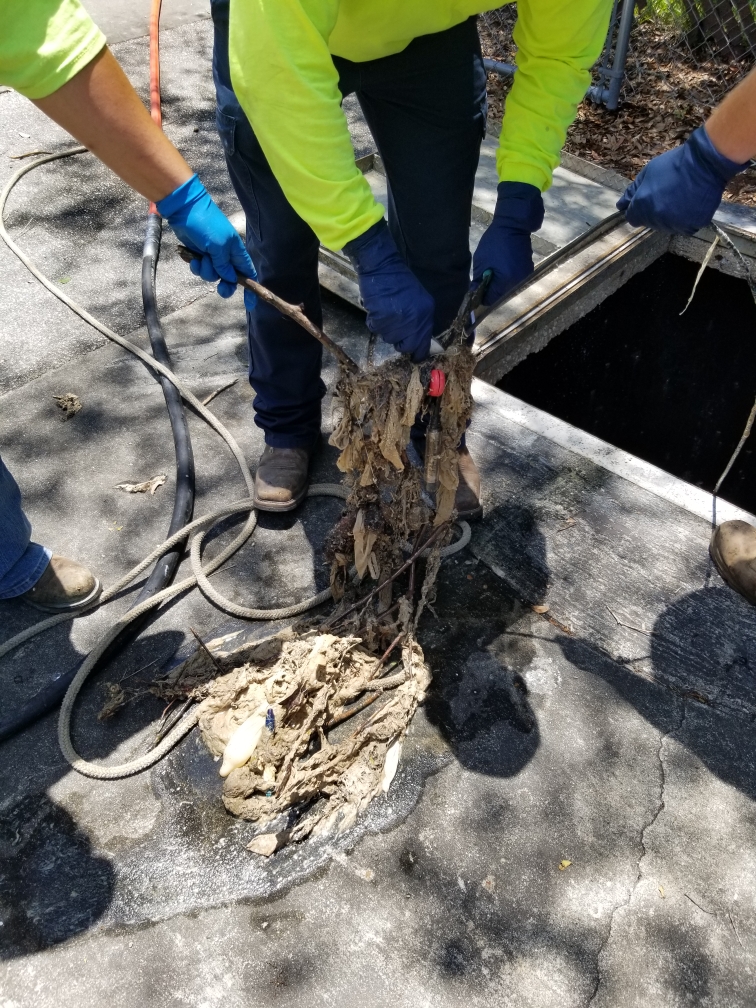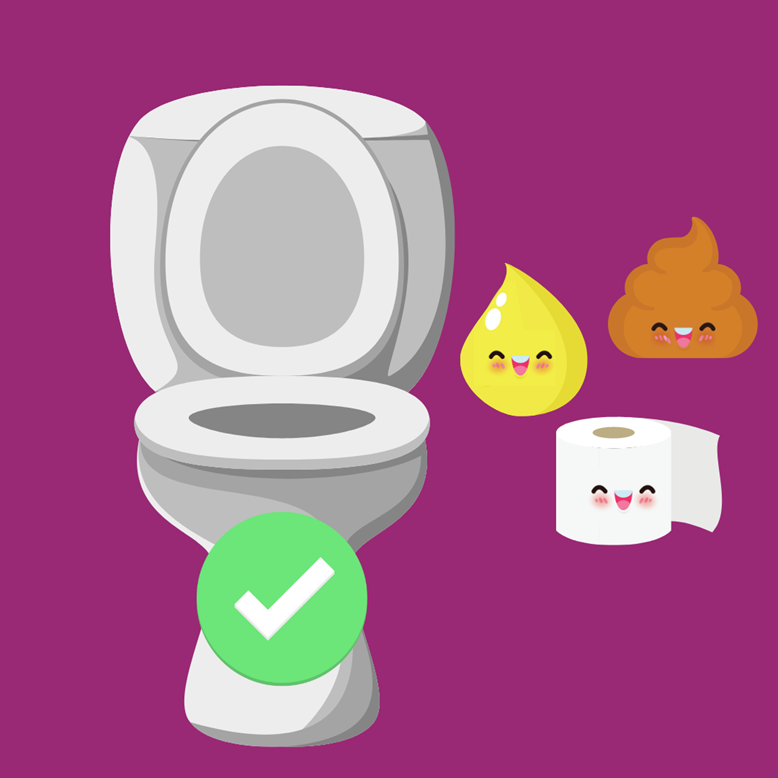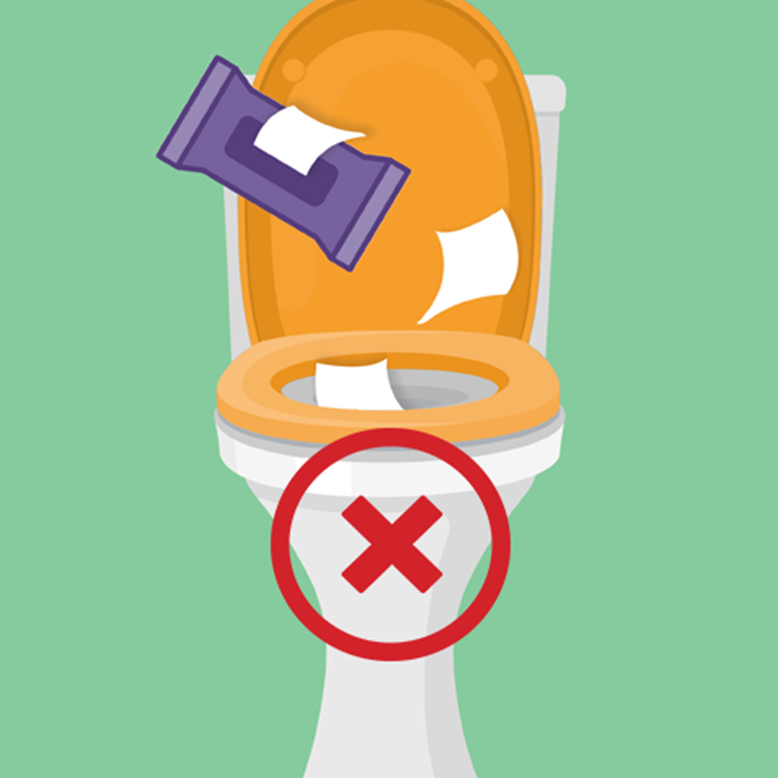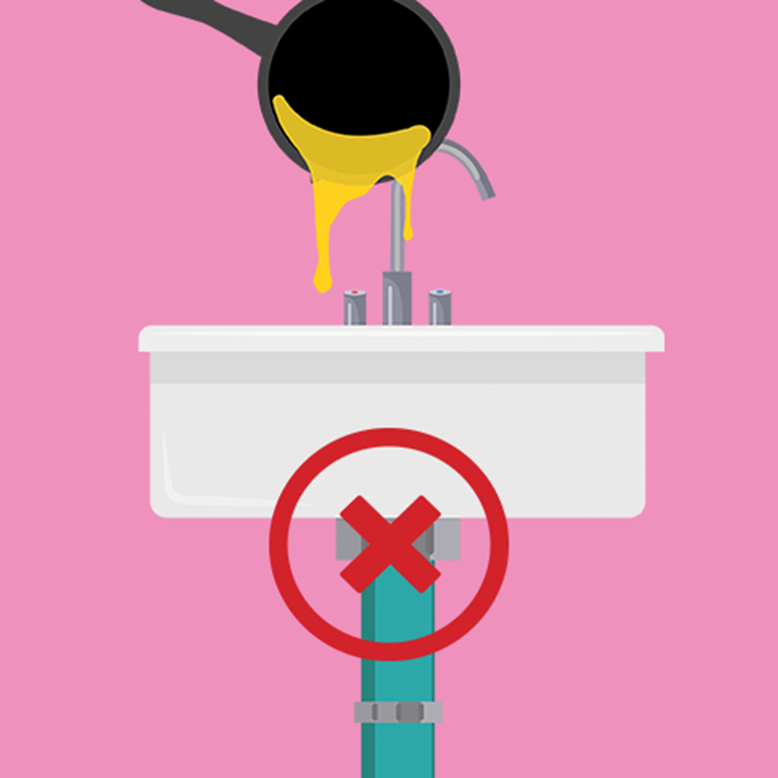Trash it. Don’t Flush it.
The Three P’s
FLUSH ’em! Poop, pee, and toilet paper are the ONLY things to flush down the toilet.
Wet Wipes
TRASH ’em, even if they’re “flushable.”
Cooking Grease
TRASH it. Let it cool, then put it in a sealed container and throw it away.

Fatbergs
Keep the fatbergs out of our pipes.
But why?
Wet wipes—yes, even the ones that say “flushable” wet wipes, feminine products, paper towels (and all the other stuff) that you flush down your toilet enters our sewer system and mixes with the grease that you have poured down your sink. This mix of personal hygiene products and grease can create “fatbergs” in our sewers.
Hold on. What are fatbergs?
The word “fatberg” combines the words “fat” and “iceberg” to describe the masses of congealed grease and personal hygiene products that have been found lingering in sewers around the world.
They are HUGE, DISGUSTING, DESTRUCTIVE, and COSTLY!
Don’t believe us? Read about the London fatberg and the Detroit fatberg.

Gross! But why is this my problem?
The clogs and backups they cause may result in expensive plumbing bills for your home or increased wastewater fees. When flushed down the toilet, wet wipes containing plastic bunch together and trap waste that forms large blockages. These act as nets and catch all kinds of waste including hair, food remains, and toilet paper. They don’t go away on their own and can be extremely costly to remove form the sewer system.
Remember only flush the three p’s. Pee, Poo and toilet Paper!
Ok. But if it says “flushable” on the package, it’s still cool to flush it, right?
NO! When a product is labeled “flushable” it generally means that it will clear your toilet bowl. It does not mean it will definitely clear your pipes or break down in the sewer system or at a wastewater treatment plant. Water and Wastewater Utilities around the world have found a significant increase in wipes in their sewer pipes and at their plants.
Truly flushable items are ones that: break into small pieces quickly, are not buoyant, and only contain materials that will readily degrade in a range of natural environments (like paper, not plastic).
Most wet wipes are made out of synthetic materials and formed into non-woven fabrics. This doesn’t seem like a huge deal, but this makes it much harder for wipes to degrade.
Most flushable wipes are held together by things like:
- Resins
- Chemicals
- Plastics
These materials are durable — which seems like a good thing. But it actually means your wipes are much harder to get rid of.
So, how should I dispose of the wipes?
Wet wipes are affordable and convenient, especially when it comes to personal hygiene. But they’re not actually flushable, and they shouldn’t make their way down a drain. Here’s a quick recap of why wipes aren’t flushable, and how to dispose of flushable wipes instead:
- Flushable wipes are made from synthetic, durable materials
- This causes wipes to form fatbergs (or massive clogs)
- Instead, throw them in a bin or compost them if appropriate















